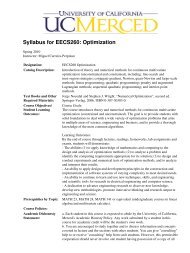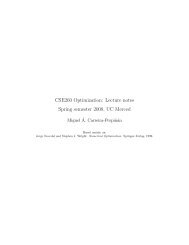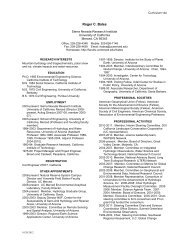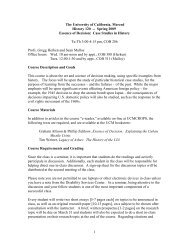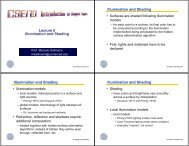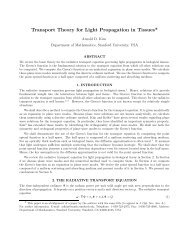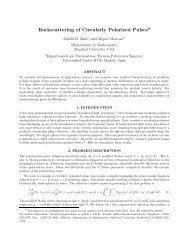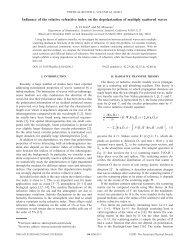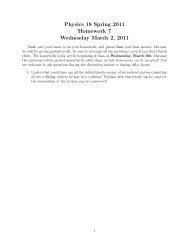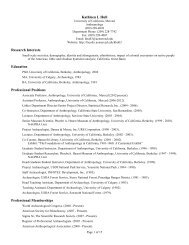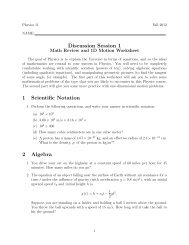Physics 9 Fall 2011 Homework 4 - Solutions Friday September 16 ...
Physics 9 Fall 2011 Homework 4 - Solutions Friday September 16 ...
Physics 9 Fall 2011 Homework 4 - Solutions Friday September 16 ...
Create successful ePaper yourself
Turn your PDF publications into a flip-book with our unique Google optimized e-Paper software.
5. When an uncharged conducting sphere of radius a is placed at the origin of an xyz<br />
coordinate system that lies in an initially uniform electric field E = E0 ˆ k, the resulting<br />
electrostatic potential is V (x, y, z) = V0 for points inside the sphere, and<br />
V (x, y, z) = V0 − E0z +<br />
E0a 3 z<br />
(x 2 + y 2 + z 2 ) 3/2<br />
for points outside the sphere, where V0 is the (constant) electrostatic potential on the<br />
conductor. Use this equation to determine the x, y, and z components of the resulting<br />
electric field. What is the full electric field in vector notation?<br />
————————————————————————————————————<br />
Solution<br />
The electric field may be found from the potential by taking the gradient,<br />
such that the components are Ex = − ∂V<br />
need to take the partial derivatives.<br />
E = −∇V,<br />
So, the x and y components are straightforward,<br />
Ex = − ∂V<br />
∂x = −E0a 3 z ∂<br />
<br />
1<br />
∂x<br />
and<br />
Ey = − ∂V<br />
∂y = −E0a 3 z ∂<br />
<br />
∂y<br />
∂x , Ey = − ∂V<br />
∂y , and Ez = − ∂V<br />
∂z<br />
(x 2 + y 2 + z 2 ) 3/2<br />
1<br />
(x 2 + y 2 + z 2 ) 3/2<br />
The z component is more work, but not too much more.<br />
Ez = − ∂V<br />
<br />
∂<br />
= −<br />
∂z ∂z<br />
V0 − E0z +<br />
E0a3 <br />
z<br />
= E0−<br />
(x 2 + y 2 + z 2 ) 3/2<br />
<br />
<br />
=<br />
=<br />
3E0a 3 zx<br />
(x2 + y2 + z2 , 5/2<br />
)<br />
3E0a 3 zy<br />
(x2 + y2 + z2 . 5/2<br />
)<br />
E0a 3<br />
(x 2 + y 2 + z 2 )<br />
. Thus, we just<br />
3/2 +<br />
3E0a3z2 (x2 + y2 + z2 . 5/2<br />
)<br />
This is all of the components, and we can write the full electric field in component<br />
form as<br />
E = −∇V = − ∂V ∂V<br />
î −<br />
∂x ∂y ˆj − ∂V<br />
∂z ˆ k,<br />
such that<br />
E =<br />
3E0a 3 zx<br />
(x 2 + y 2 + z 2 )<br />
5/2 î+<br />
3E0a 3 zy<br />
(x2 + y2 + z2 ˆj+ 5/2<br />
)<br />
6<br />
<br />
E0 −<br />
E0a 3<br />
(x2 + y2 + z2 + 3/2<br />
)<br />
3E0a 3 z 2<br />
(x 2 + y 2 + z 2 ) 5/2<br />
<br />
ˆk.




